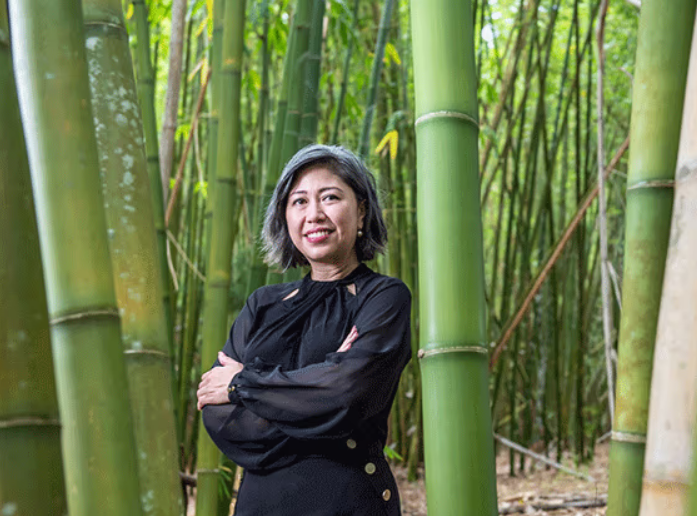Mari Miranda has been investigating the ecological benefits of bamboo since enrolling in University of Southern Queensland’s Master of Engineering in 2017. An engineering officer by trade, Mari said green building material could be the solution to skyrocketing construction costs and play a key role in Australia’s efforts to reduce carbon emission by 2030.
 “Bamboo is a durable, affordable and highly renewable building material and poles apart from timber when it comes to its sustainable and eco-friendly credentials,” Mari said. “Bamboo forests can help mitigate climate change due to its fast sequestration of carbon and converting its poles to bamboo products such as a construction material will further lock the carbon it stored. It also has significant mechanical properties suitable for structural applications that make it more attractive than other go-to building materials – it’s cheap, it’s light and it’s strong.”
“Bamboo is a durable, affordable and highly renewable building material and poles apart from timber when it comes to its sustainable and eco-friendly credentials,” Mari said. “Bamboo forests can help mitigate climate change due to its fast sequestration of carbon and converting its poles to bamboo products such as a construction material will further lock the carbon it stored. It also has significant mechanical properties suitable for structural applications that make it more attractive than other go-to building materials – it’s cheap, it’s light and it’s strong.”
Stronger than the widely used timber in Australia, bamboo takes just three to five years to grow and unlike timber, doesn’t have to be uprooted and replanted as it grows back after its harvested.
In recent years, bamboo products and goods have become increasingly popular in Australian homes, but a lack of building regulations for bamboo makes it difficult to build major buildings or structures in the country. Mari was born and raised in the Philippines where bamboo plays a significant role in Filipino culture and daily lives. Some of her fondest memories as a child were the days she spent at her grandparents’ bamboo-made house. Her wish now is to see bamboo recognized as a mainstream construction material.
“Bamboo is the fastest growing and most versatile plant in the world, but Australia has yet to realize the enormous potential of bamboo culms (poles) which could help solve the nation’s housing and climate crises,” Mari said. “There are lots of bamboo structures in Colombia, Indonesia and China, so if they can build bamboo structures there, why can’t we build them here?”
For her research, Mari interviewed bamboo growers, mainly from New South Wales, to identify the suitability of growing bamboo to source the production, and designers/builders to understand the barriers of recognizing bamboo as a construction material. She found one of the biggest challenges of building large-scale structures with bamboo was connecting the round bamboo poles, which is the topic of her next research project. “It’s not like you can use typical nails, rivets or bolts to join the poles; you need a specific joint or connecting system to support bamboo construction,” she said.
In recent years, engineered bamboo such as laminated bamboo lumber has become a popular building material because it can be used in more ways in design and construction. However, manufacturing engineered bamboo involves 30 per cent more embodied energy — the energy used to make them – than the natural round form.
“There is a lot of potential for bamboo that needs to be explored, but we’ll never be able to fully understand the characteristics, properties and construction limitations of bamboo unless we start undertaking more large-scale bamboo construction projects in Australia,” Mari said.
You can read the original article at www.unisq.edu.au

